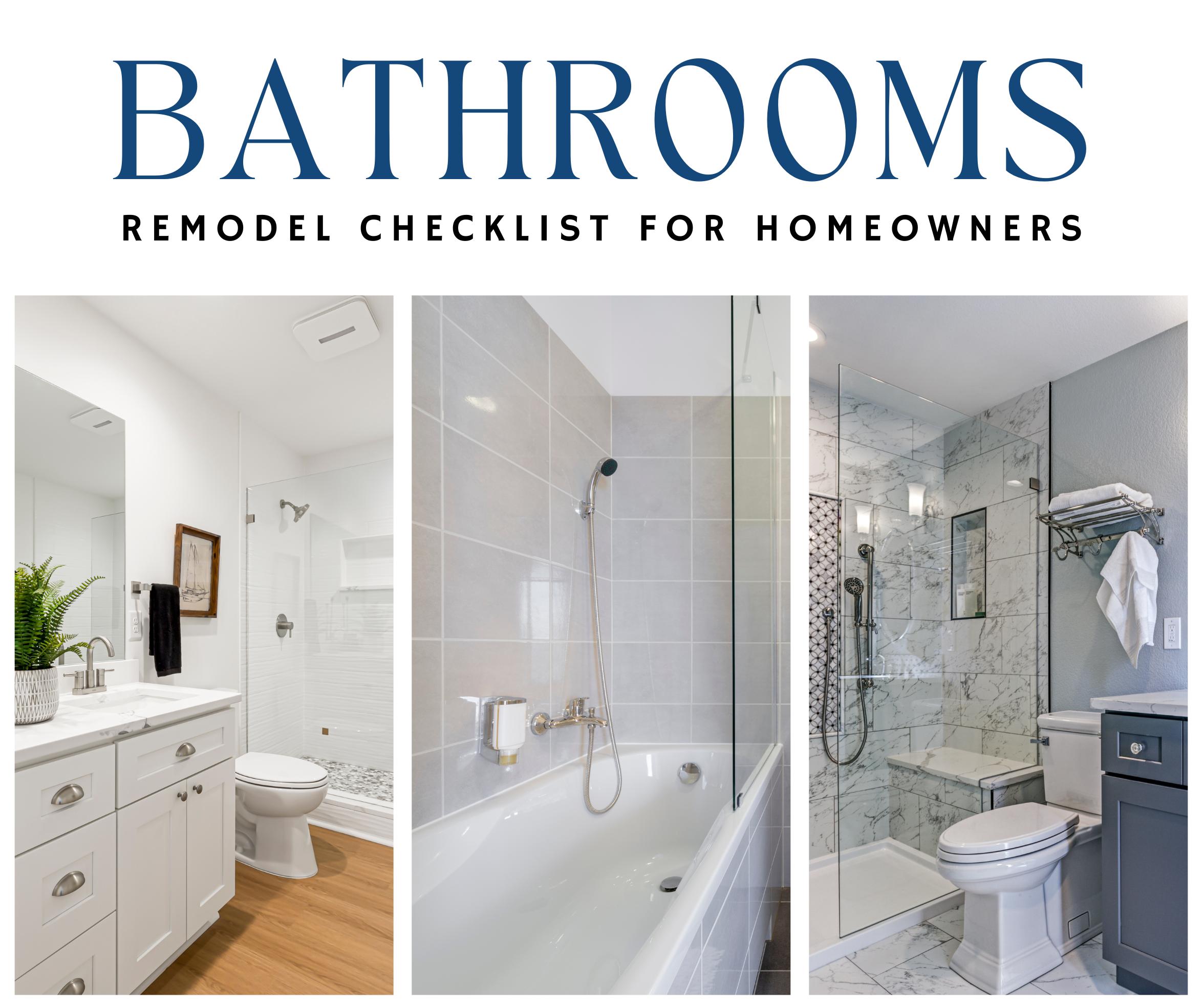
Remodeling your bathroom is an exciting way to refresh and add value to your home. However, with so many options available and decisions to make, it can quickly become overwhelming. This checklist will help you stay organized, ensure you’re prepared when meeting with contractors, and guide you through the key steps of planning your remodel.
1. Define Your Bathroom Remodel Goals
Before you start calling contractors, make sure you have a clear idea of what you want from your remodel. Ask yourself the following questions:
- Are you looking to update the style, improve functionality, or both?
- Do you want a full remodel or just minor upgrades (e.g., new fixtures or tiles)?
- Are there specific problem areas, like leaks or poor ventilation, that need to be addressed?
Knowing what your priorities are will help you communicate effectively with contractors.
2. Gather Inspiration and Examples
Contractors appreciate it when homeowners come prepared with examples of what they want. Start by gathering ideas and inspiration for your new bathroom. This can include:
- Photos from websites, magazines, or social media (Pinterest is a great resource).
- Specific products or materials you want to incorporate (e.g., types of tiles, vanities, or fixtures).
- Color schemes and design themes (modern, rustic, minimalist, etc.).
Having these visual references will ensure you're on the same page with the estimator when they arrive.
3. Set a Budget
Knowing your budget before meeting with contractors is crucial. Bathroom remodels can vary greatly in cost depending on the materials, scope of work, and labor involved. Determine:
- Your overall budget for the project.
- A breakdown of how much you're willing to spend on key elements like tiles, fixtures, and labor.
- A contingency fund for unexpected expenses (usually 10-20% of your total budget).
Being upfront with contractors about your budget allows them to give you realistic options from the start.
4. Consider the Layout and Functionality
Are you happy with the current layout of your bathroom, or do you need to change it? Moving plumbing and electrical fixtures can increase costs, so be sure to weigh the benefits:
- Can you keep the sink, toilet, and shower in the same positions?
- Would adding storage, counter space, or natural light make the bathroom more functional?
- Do you need accessibility features like a walk-in shower or grab bars?
Having a clear idea of your layout needs will streamline the remodeling process.
5. Choose the Right Materials
Bathrooms are high-moisture areas, so choosing durable and water-resistant materials is key. Think about:
- Flooring options (ceramic tile, vinyl, stone).
- Wall finishes (tiles, paint, waterproof wallpaper).
- Fixtures (stainless steel, brass, or chrome?).
- Countertops (quartz, marble, or laminate).
Make a list of materials you prefer, and be prepared to discuss them with the contractor to determine what works best for your needs and budget.
6. Have a Clear Timeline
Be prepared to discuss your desired timeline with your contractor. Keep in mind:
- How long the project will take (typically 2-3 weeks for a full remodel).
- Any flexibility you have for delays or complications.
- Times when you’ll need access to the bathroom, such as for daily use or guests.
A clear timeline can help you plan around the construction and ensure you’re aligned with the contractor's schedule.
7. Ask About Permits and Regulations
Some bathroom remodels require permits, especially if you’re moving plumbing, electrical wiring, or changing the structure. Discuss with your contractor:
- What permits are necessary.
- Who will be responsible for obtaining them.
- Any local regulations or building codes that need to be followed.
Make sure everything is up to code to avoid issues down the line.
8. Get Multiple Estimates
Never settle for the first estimate you receive. It’s important to compare offers from several contractors to get the best deal and ensure you’re working with someone reputable. When getting estimates:
- Make sure they include a breakdown of materials, labor, and any additional fees.
- Ask for references and check reviews.
- Verify that the contractor is licensed and insured.
How SnapCosts Can Help
Remodeling your bathroom is a big investment, and finding the right contractor is crucial. SnapCosts makes the process easier by helping you compare estimates from multiple local contractors who are fully licensed and insured. With SnapCosts, you can ensure you’re getting a fair price and choose the contractor that best fits your needs and budget. Let SnapCosts take the stress out of your bathroom remodel so you can focus on enjoying your new space!
Although the material contained in this website was prepared based on information from public and private sources that we believes to be reliable, no representation, warranty or undertaking, stated or implied, is given as to the accuracy of the information contained herein, and we expressly disclaims any liability for the accuracy and completeness of information contained in this article.